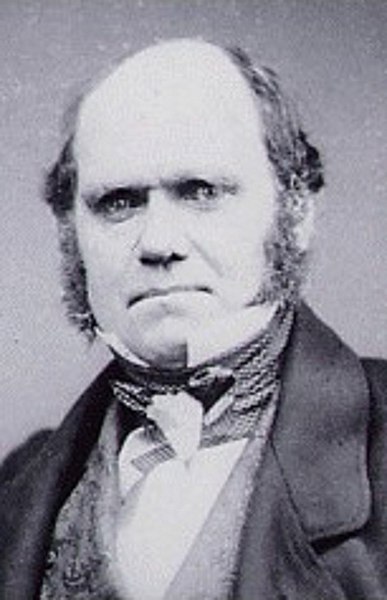Difference between revisions of "Darwinism" - New World Encyclopedia
Rick Swarts (talk | contribs) (Adding article from Wikipedia) |
|||
| Line 1: | Line 1: | ||
| − | + | {{Contracted}}{{Status}}Note: This is only a very rough draft, with notes that may be useful in developing the article. Please do not edit this article until the actual article is complete — i.e., when this notice is removed. You may add comments on what you would like to see included. [[User:Rick Swarts|Rick Swarts]] 01:31, 23 Oct 2005 (UTC) | |
Revision as of 17:33, 28 October 2005
Note: This is only a very rough draft, with notes that may be useful in developing the article. Please do not edit this article until the actual article is complete — i.e., when this notice is removed. You may add comments on what you would like to see included. Rick Swarts 01:31, 23 Oct 2005 (UTC)
- This article is about Darwinism as a philosophical concept; see evolution for the page on biological evolution; modern evolutionary synthesis for neo-Darwinism; and also evolution (disambiguation).
Darwinism is a term used for various processes related to the ideas of Charles Darwin, particularly concerning evolution and natural selection. Darwinism in this sense is not synonymous with evolution, but rather with evolution by natural selection. Modern biology suggests a number of other mechanisms involved in evolution which were unknown to Darwin, such as genetic drift.
Also, Darwinism may be used to contrast it with other, discredited mechanisms of evolution that were historically thought possible, such as Lamarckism or mutationism. More recently, intelligent design creationists have used the word to contrast accepted evolutionary biology with their pseudoscientific ideas.
To say that Darwinism is often used by biologists is an understatement that verges on bathos; Darwinian random variation and subsequent selection is occasionally used by mathematicians to describe evolutionary processes that resemble the evolution of life, such as the development of software with genetic algorithms.
In the 19th-century context in which Darwin's Origin of Species was first received, "Darwinism" came to stand for an entire range of evolutionary (and often revolutionary) philosophies about both biology and society. One of the more prominent approaches was that summed in the phrase "survival of the fittest" by the philosopher Herbert Spencer, which was later taken to be emblematic of Darwinism even though Spencer's own understanding of evolution was more Lamarckian than Darwinian. What we now call "Social Darwinism" was, in its day, synonymous with "Darwinism" — the application of Darwinian principles of "struggle" to society, usually in support of anti-philanthropic political agendas. Another interpretation, one notably favored by Darwin's cousin Francis Galton, was that Darwinism implied that because natural selection was apparently no longer working on "civilized" people it was possible for "inferior" strains of people (who would normally be filtered out of the gene pool) to overwhelm the "superior" strains, and corrective measures would have to be undertaken — the foundation of eugenics.
In Darwin's day there was no rigid definition of the term "Darwinism", and it was used by opponents and proponents of Darwin's biological theory alike to mean whatever they wanted it to in a larger context.
In a modern definition of the term, a Darwinian process requires the following schema:
- Self-replication/Inheritance: Some number of entities must be capable of producing copies of themselves, and those copies must also be capable of reproduction. The new copies must inherit the traits of old ones. Sometimes the different variations are recombined in sexual reproduction.
- Variation: There must be a range of different traits in the population of entities, and there must be a mechanism for introducing new variations into the population.
- Selection: Inherited traits must somehow affect the ability of the entities to reproduce themselves, either by survival, or natural selection, or by ability to produce offspring by finding partners, or sexual selection.
If the entity or organism survives to reproduce, the process restarts. Sometimes, in stricter formulations, it is required that variation and selection act on different entities, variation on the replicator (genotype) and selection on the interactor (phenotype).
Darwinism asserts that any system given these conditions, by whatever means, evolution is likely to occur. That is, over time, the entities will accumulate complex traits that favor their reproduction. (Universal Darwinism)
Application and examples
Most obviously, this can refer to biological evolution. However, it has other potential spheres, the best known of which is the meme, a concept of inheritance and modification of ideas introduced by Richard Dawkins in his 1976 book The Selfish Gene. It has been disputed if this was a Darwinian process, since it is unproven that memes undergo random mutations.
Another example to illustrate are computer systems (PCs). Taking the software as the replicator and the whole system as the interactor, it could be seen as a Darwinian system, however, the code does not change randomly, but is directionally changed or rewritten from scratch; also systems do not reproduce.
Daniel Dennett (1995) in Darwin's Dangerous Idea argues for universal Darwinism.
External links
da:Darwinisme de:Darwinismus es:Darwinismo lt:Darvinizmas nl:Darwinisme ja:ダーウィニズム no:Darwinisme pl:Darwinizm pt:Darwinismo sv:Darwinism
Credits
New World Encyclopedia writers and editors rewrote and completed the Wikipedia article in accordance with New World Encyclopedia standards. This article abides by terms of the Creative Commons CC-by-sa 3.0 License (CC-by-sa), which may be used and disseminated with proper attribution. Credit is due under the terms of this license that can reference both the New World Encyclopedia contributors and the selfless volunteer contributors of the Wikimedia Foundation. To cite this article click here for a list of acceptable citing formats.The history of earlier contributions by wikipedians is accessible to researchers here:
The history of this article since it was imported to New World Encyclopedia:
Note: Some restrictions may apply to use of individual images which are separately licensed.
